All pet owners worry, especially when it comes to the health of our dogs. That’s why making sure our furry friends are in the best health possible is a priority for all of us.
However, it can be tricky for us to keep track of all the different foods our pets are eating at times, especially for those of us who own greedy pups that like to gobble down everything they see, from stealing scraps of food on the floor to even stealing a sausage from our own plates. And not to mention what other people might be feeding them.
Luckily for you, we have a breakdown of the top 13 toxic foods for dogs. Some, you’ll likely already know, but others might be a surprise.
1. Chocolate

We’ve all heard that chocolate can be harmful to dogs. But do you know why? It’s because chocolate contains two simulates: theobromine and caffeine. Although these simulates are fine for us humans in moderate amounts, dogs can’t metabolize them properly, which can cause ingestion. This then leads to a whole host of other nasty symptoms and problems, such as vomiting, diarrhea, rapid breathing, increased heart rate, and even seizures in severe cases.
Although milk chocolate is harmful, dark chocolate is the one you need to watch out for the most, as it contains higher levels of theobromine, making it even more dangerous for our furry friends.
2. Onions and Garlic
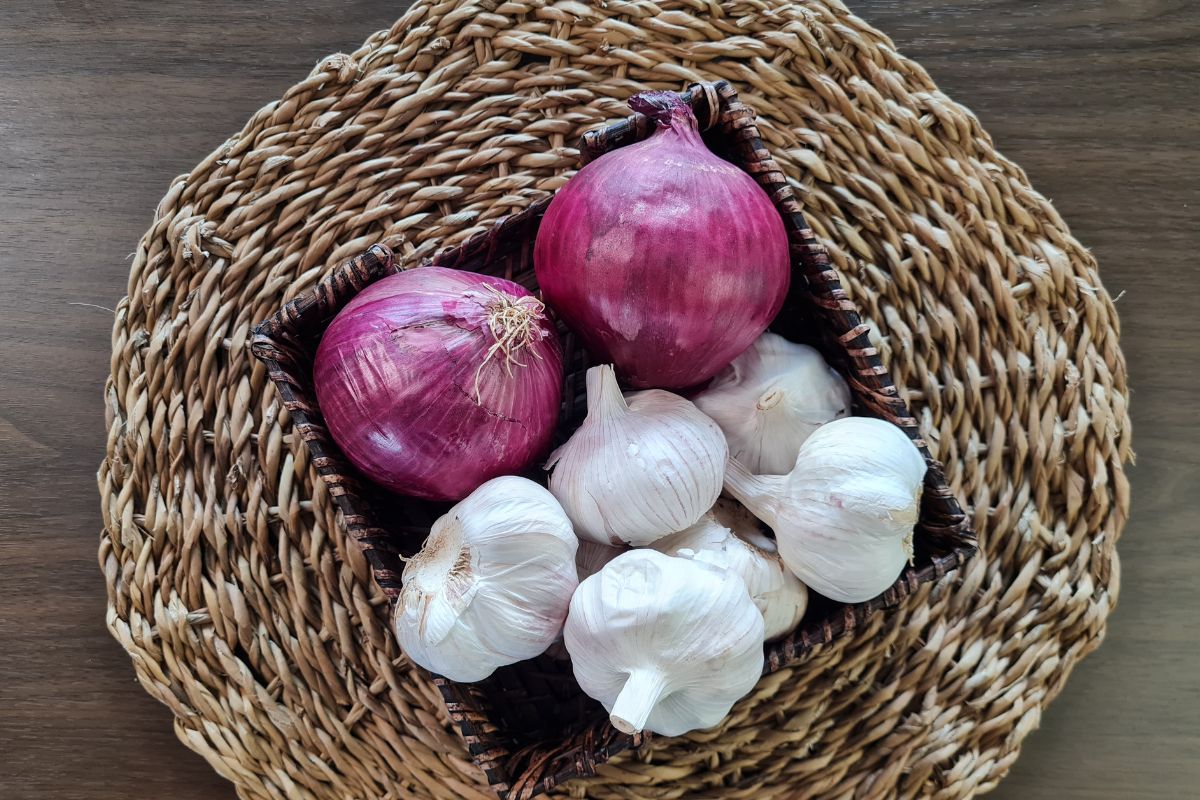
Both onions and garlic are part of the allium family, which is toxic to dogs. When ingested, these foods can cause gastrointestinal irritation and may even damage your dog’s red blood cells, leading to anemia.
Signs of anemia in dogs include pale gums and less stamina and energy for walks or exercise. In extreme cases, they may even collapse.
The effects caused by onions and garlic can develop over time, so even small amounts of these foods given regularly can cause big problems. We’d suggest avoiding them altogether.
3. Raisins and Grapes
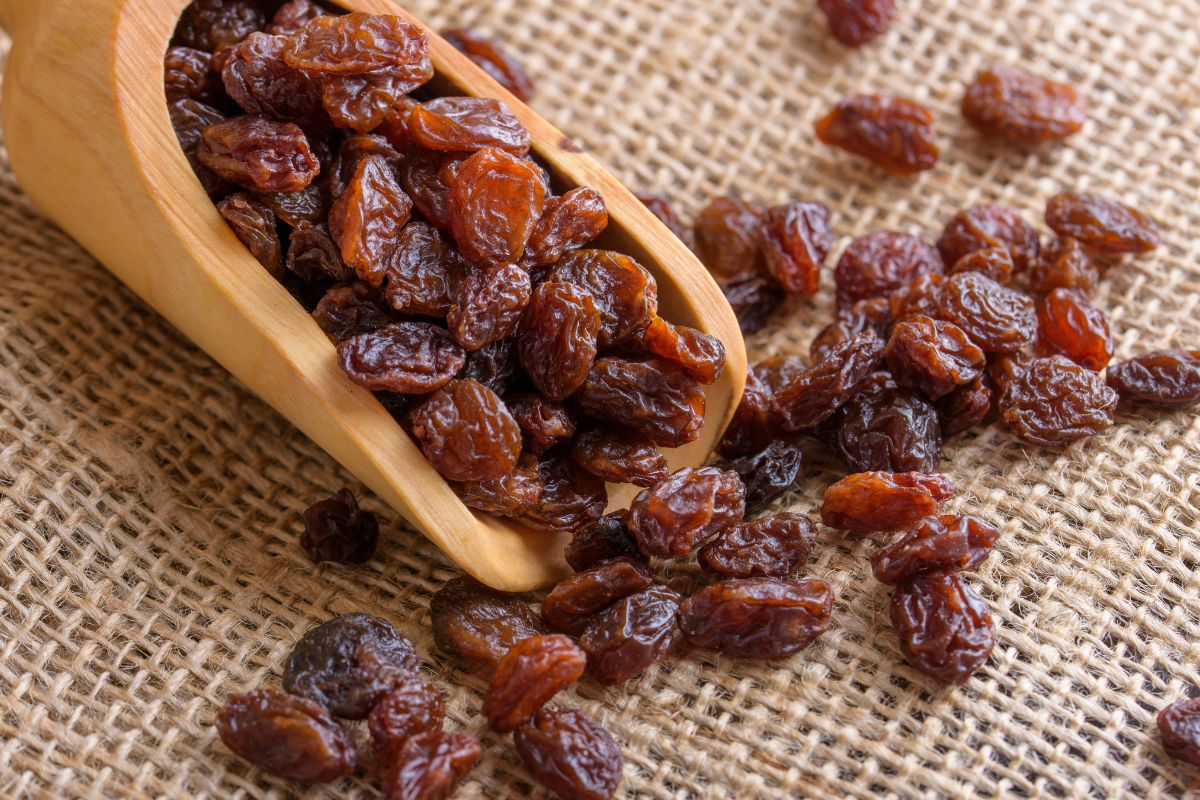
Raisins, grapes, currants, and sultanas are all toxic to dogs and should be avoided at all costs. Although we humans consider these tasty treats quite healthy, they can actually cause acute kidney failure in our animal companions. What’s worse is we don’t actually know how much of these foods cause the damage, as all dogs respond differently. Symptoms you should be on the lookout for include vomiting, lethargy, and depression.
4. Corn on the Cob

Corn by itself is actually not toxic to dogs– it’s the cob that causes all the trouble. Corn cobs can cause severe choking, which can kill your dog instantly if they can’t swallow it. And if they do manage to swallow it, a cob can actually block the digestive system or cause intestinal ruptures. Most times, your dog will need surgery to remove it safely.
Symptoms of an obstruction include vomiting, loss of appetite, and abdominal pain. If you notice any of these symptoms in your dog, it’s important to get them to a vet right away.
5. Alcohol
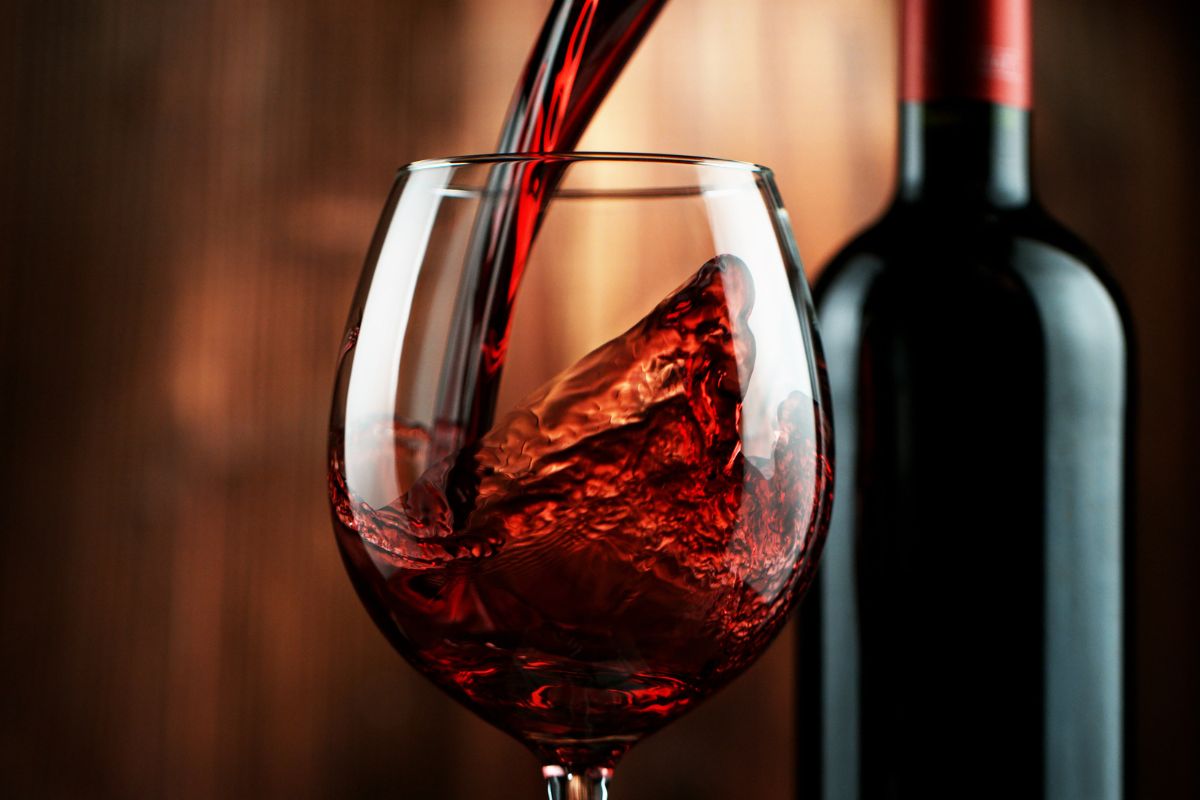
In large amounts, alcohol can even be fatal to us humans, so it would make sense that it’s not great for dogs, either. The biggest difference is it takes far less of the substance to cause damage to our furry friends. Even small amounts of alcohol can lead to vomiting, diarrhea, depression, problems with coordination, difficulty breathing, a coma, or even death.
6. Macadamia Nuts

Researchers actually don’t know what it is about Macadamia nuts that are so toxic to dogs – they just know they are. Even if your dog ingests a few, it can lead to vomiting, weakness, tremors, and even hyperthermia.
Symptoms usually appear within 12 hours of ingestion and can last approximately 12 to 48 hours. Always make sure to get your furry friend checked out by a vet if you think they may have swallowed Macadamia nuts.
7. Blue Cheese
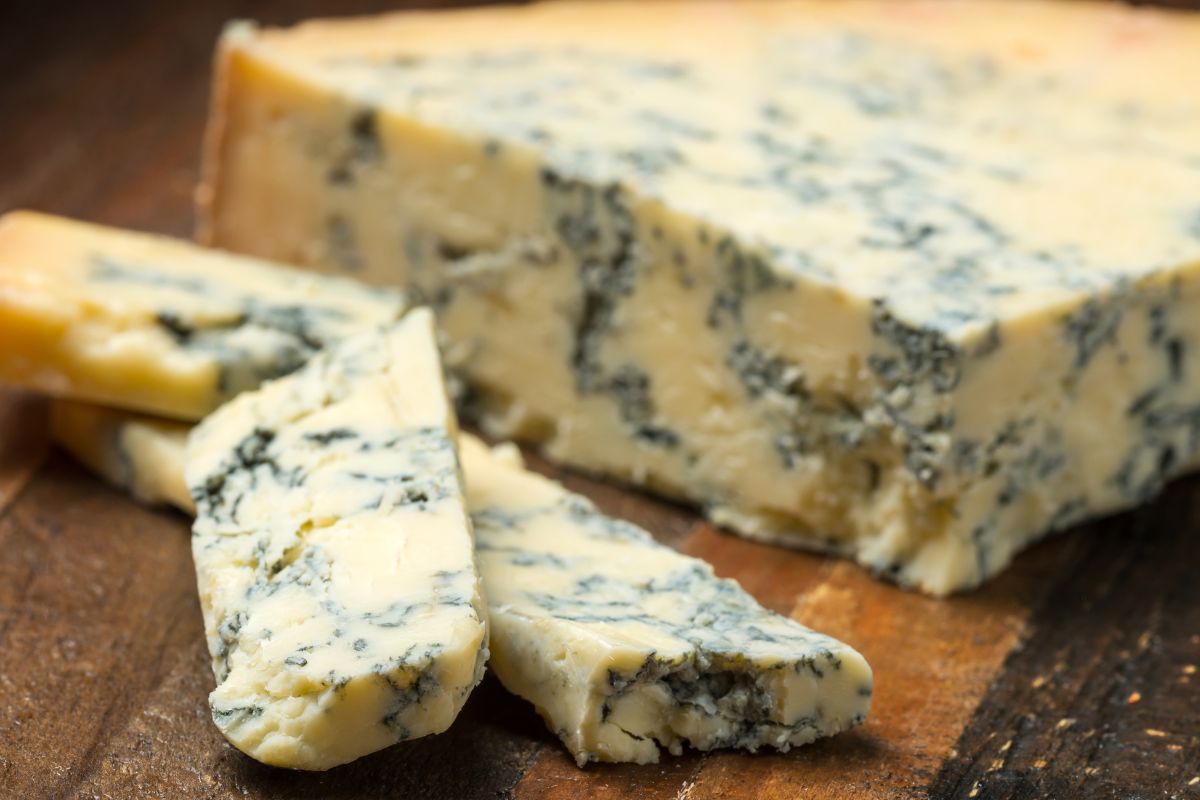
Blue cheese contains roquefortine C, which is a harmful fungus that can make dogs sick. Eating blue cheese can cause dogs to develop vomiting, diarrhea, high temperatures, and even seizures in severe cases.
8. Coffee

Coffee and other caffeine-containing foods and drinks can have a range of harmful effects on dogs. These include restlessness, rapid breathing, heart palpitations, and muscle tremors. In severe cases, ingestion can be fatal, and even a moderate amount of coffee can cause death.
9. Cooked Bones

We’ve all heard the saying, “Give the dog a bone.” However, it’s not something we recommend! Cooked bones can actually splinter and cause obstruction in your dog’s digestive system. Even bones that don’t splinter can lead to constipation or cause blockages, which can cause trauma and hurt your dog. Raw bones may even contain bacteria such as salmonella, which can make your dog severely ill.
If your dog loves bones, all hope isn’t lost. You can still give your dog an edible synthetic bone or a chew toy, which are both much safer options.
10. Xylitol

This sugar substitute is found in many sugar-free products, including gum, candies, and some peanut butters, and it’s super toxic for our furry friends.
Small amounts of xylitol can cause hypoglycemia (low blood sugar) and even lead to liver failure, seizures, and death in dogs. If you think your dog may have taken Xylitol, it’s important to get them seen by a vet. Initial symptoms may include vomiting and loss of coordination.
We all know how much our dogs love peanut butter! Many dog treat recipes will even contain this tasty ingredient. However, make sure to check the peanut butter in question doesn’t include xylitol before you feed it to your dog.
11. Bread Dough

Bread itself is actually fine for pets to eat in small amounts (as long as it doesn’t contain any of the other ingredients we’ve mentioned on this list, such as chocolate, nuts, or raisins!)
However, raw bread dough can cause a lot of problems. This is because the uncooked yeast ferments the carbohydrates in the dough. In other words, the bread dough will start to rise! This releases toxic levels of ethanol and carbon dioxide into your poor pup’s bloodstream. The dough can also cause intestinal blockages as well which, as we’ve already mentioned, can lead to a whole host of other problems.
12. Gum
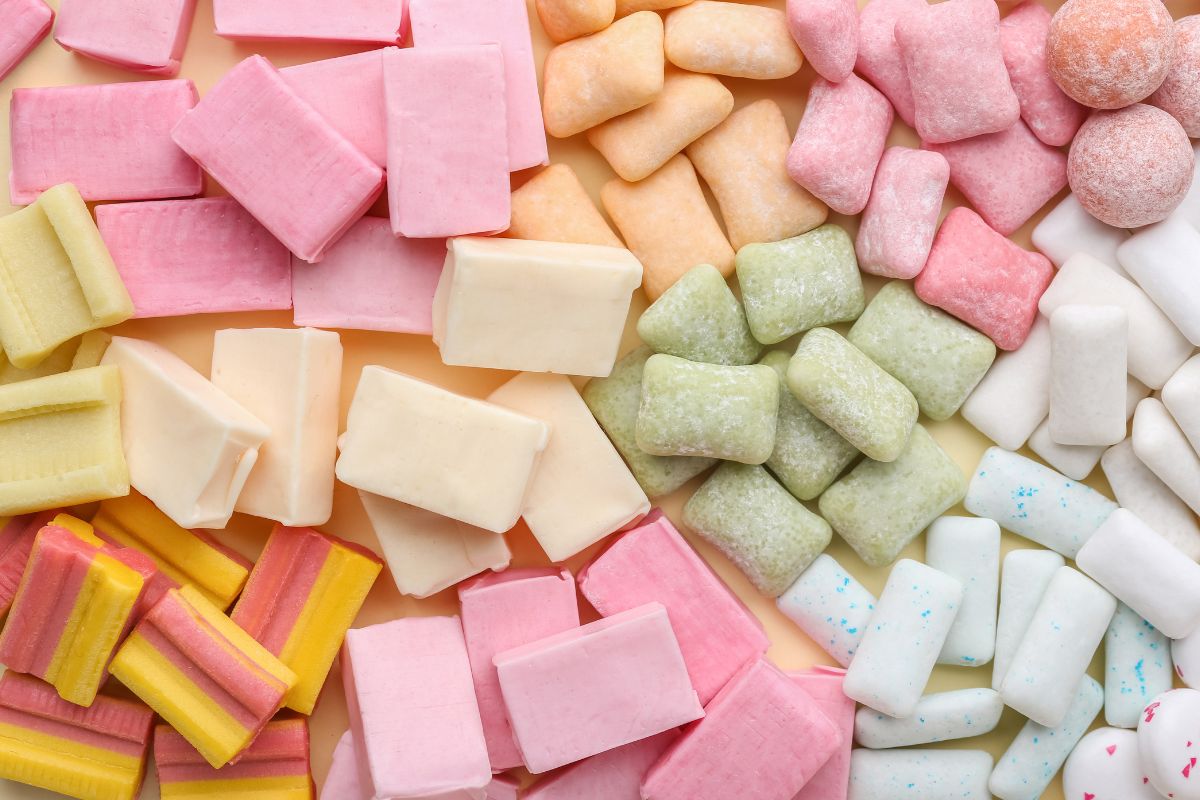
If you’re a fan of gum, you’ll have likely heard that old wives tale: that if you swallow it, it’ll sit in your stomach for years and years. In actual fact, that’s not true, and swallowing gum isn’t remotely harmful to our digestive systems.
However, the same can’t be said for dogs. Many gum types and brands contain xylitol, which, as we’ve already mentioned, is seriously toxic for dogs and can cause a whole range of terrifying health issues, such as hypoglycemia, seizures, and liver failure.
13. Walnuts
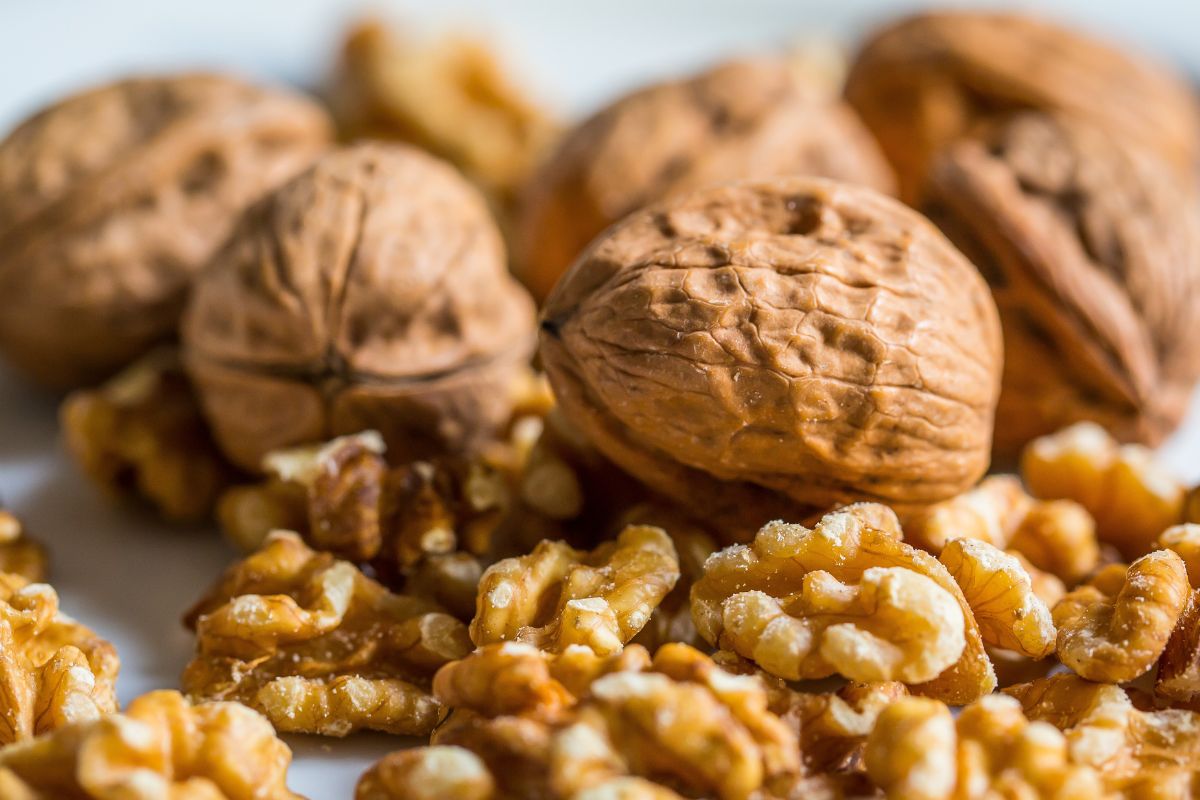
A large amount of walnuts can be highly toxic to our pups, as they have a toxin that can cause seizures or neurological symptoms. They can also lead to pancreatitis, which is a life-threatening condition.
And although some websites might suggest giving dogs the occasional walnut, we don’t recommend it at all. These nuts are high in fats, which can upset your dog’s stomach, but they can also make your dog choke or cause intestinal blockages. We suggest avoiding them altogether.
Poison-Proofing Your Home
Any dog owner knows that pets can be unpredictable at times, and they won’t always understand that they shouldn’t eat certain foods. So how can we pet owners provide a safe environment for them and ensure they don’t ingest any of the above foods? (Especially if some of them happen to be our personal favorites!)
Don’t worry - here are a few tips you can try to keep your pup safe.
- Keep all food out of reach of curious paws (and mouths). We’d suggest putting any hazardous foods in secure containers. You don’t have to padlock them (although it may be tempting after reading this list), but make sure they have a clasp so they won’t spill out if the container accidentally falls. This includes items such as fruits and nuts.
- If you have a family or live with friends, make sure everyone in your home knows which foods can be dangerous to your dog. While no one would deliberately try and poison a dog, your children may unwittingly share their snacks with their four-legged friends, especially if they’re given those big, sad puppy-dog eyes. Even we have trouble resisting those.
- Store your trash cans and recycling bins far away from prying paws. Our clever pups are adept at seeking out scraps, especially when they’re left to their own devices.
- Make sure to keep a watchful eye on your dog during meals and parties, especially if there are guests in your home. Make sure all guests know that they shouldn’t be feeding your dog scraps of food, no matter how many sad stares they’re subjected to. Remember, some of the above foods are dangerous even if they’re digested in small amounts.
- Give your dog the right snacks. Keep a list of dog-safe fruits and veggies on hand so you (and everyone else in your household) know what’s safe to give them.
Make sure to store all medications, cleaning supplies, and chemicals out of reach. If your pup is particularly curious, we recommend using child-proof latches to be on the safe side.
Signs Your Dog May Have Eaten Something Bad

Although we try, we can’t always keep an eye on our dogs 24/7. However, if they’ve eaten something they shouldn’t, there are always signs. Look out for the following warning bells, and if you notice any of these signs, contact your vet for advice.
- Vomiting – either a few minutes to several hours after ingestion
- Diarrhea
- Loss of appetite
- Abdominal pain – look out for whimpering, growling, or flinching when the stomach is touched
- Tiredness
- Difficulty breathing – such as rapid breathing, wheezing, or panting without a cause
- Coordination problems — such as difficulty standing or trouble walking
- Tremors
- Restlessness
- Seizures
This is not an exhaustive list of signs, and you know your dog better than anyone. If you notice any other symptoms that aren’t on this list, it’s important to get your dog checked out.
Keep in mind that some symptoms may be due to other things. For example, if your dog is tired or restless, they may be cold and need warming up.
What to Do if Your Dog Has Eaten Something They Shouldn’t
Sometimes, even despite our best efforts, dogs can get ahold of food they’re not supposed to. If you think your dog has eaten something they shouldn’t, whether that’s anything from our list or something else, the most important thing to do is not panic and follow these tips:
- Try to determine what your dog ate, how much they ate, and when it happened. You’ll need to pass this information on to your vet.
- If you know your dog has eaten something toxic, call your vet or take your dog to the nearest emergency clinic right away. They’ll be able to provide specific advice based on what your dog ate. You can also always call your vet for advice beforehand.
- Don’t try and make your dog vomit unless you’re specifically told to by the vet. This may cause more harm than good.
It’s important to follow your vet’s advice. They may tell you to bring your dog in for an examination, or they may even provide specific at-home care instructions. Whatever the case, make sure to take note and follow their guidance. They know what’s best.
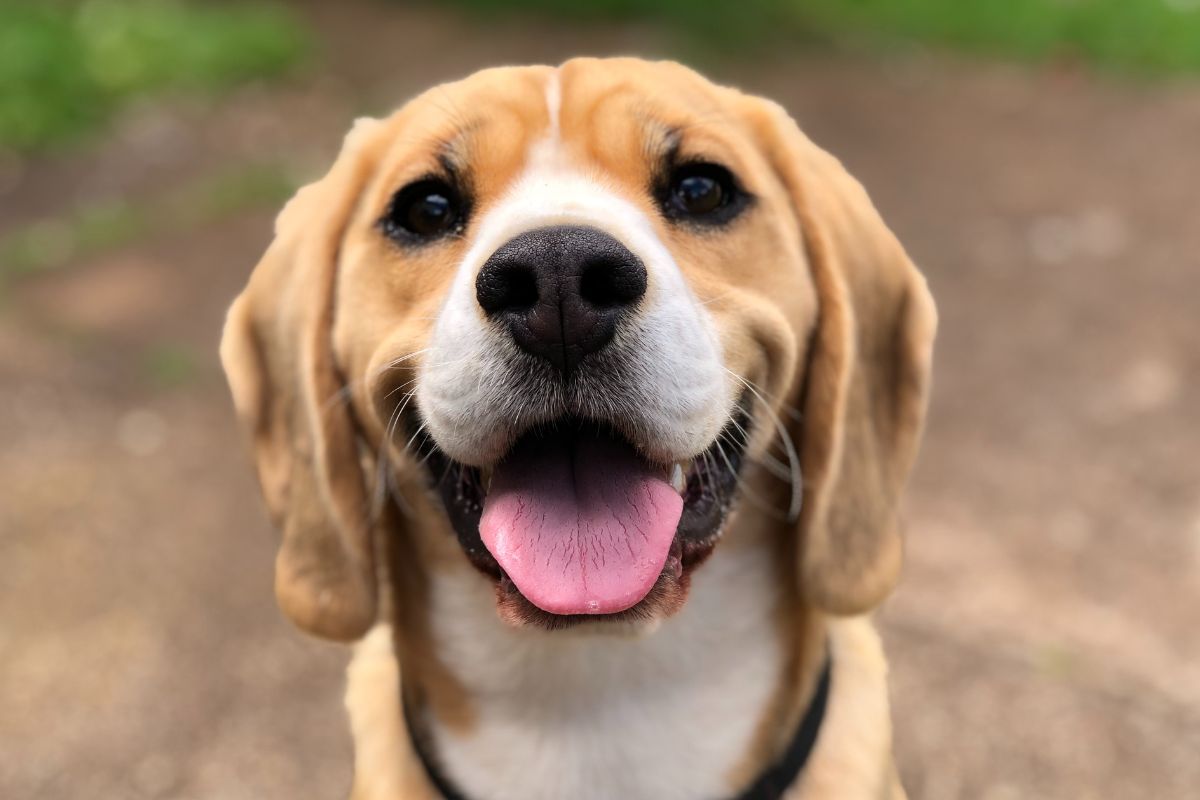
Preventing Future Incidents
Once the crisis is averted and you know your dog is going to be fine, you can take a big, deep breath of relief. Then it’s time to get to work. Even if you’ve already poison-proofed your home, you’ll probably need to take additional steps to keep your pup’s curious paws off foods that will cause them harm. If it was a friend or a family member who unknowingly gave them the food, make sure they know how important it is to stick to certain snack foods – or to not feed your dog at all.
We also recommend keeping emergency numbers on hand. This includes your vet’s number, a 24-hour emergency veterinary clinic (in case anything happens out of hours), and the ASPCA Animal Poison Control Center. This way, you’ll always be prepared for any emergency situation – not just food mishaps.
Final Thoughts
It’s not always possible to stop your dog from eating things they shouldn’t, but knowing what to avoid is certainly a good place to start. Make sure your dog’s diet only consists of safe and healthy foods that are good for them and will help their digestive system move as it should.
Whenever you’re in doubt, speak to a vet! Google isn’t always a reliable source of information, and trained professionals will let you know which foods to avoid and which ones are great to give to your dog.
Remember, if you think your dog has ingested something they shouldn’t, or if they’re showing symptoms such as vomiting or diarrhea, get them checked out by a vet. Your pup will be back to their old self in no time.

